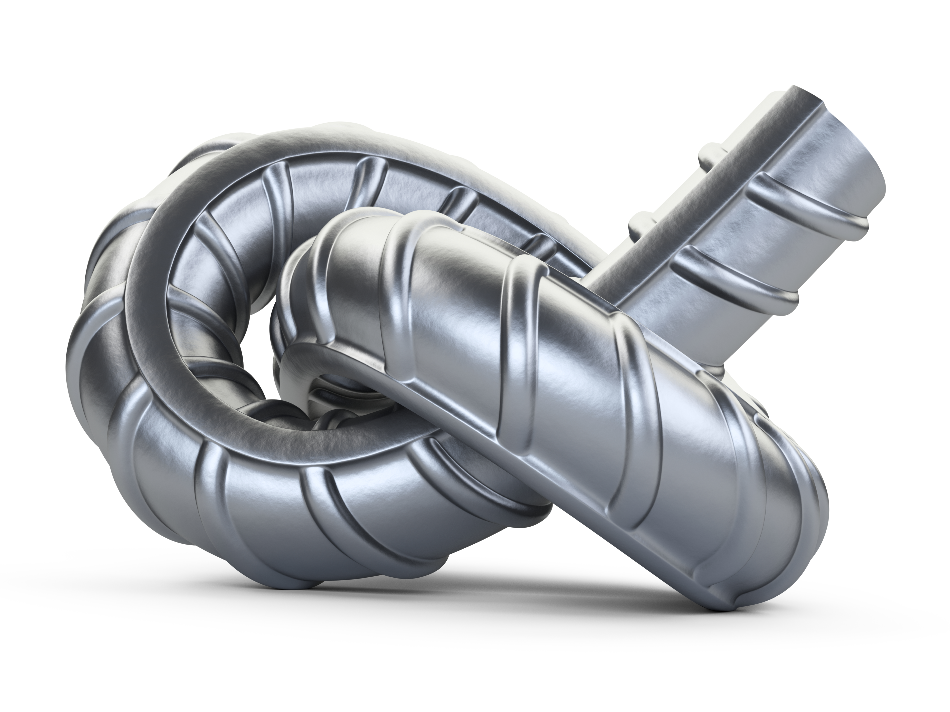Feb 1 2002

Marynchenko Oleksandr / Shutterstock
Over the last 10 years, steelmakers around the world have developed new structural-grade steels with higher tensile strengths and yields. This progress has enabled producers to use lighter section steels to build their steel products, thus minimizing the costs of producing, shipping, and assembling the end product.
Before this progress, Grade 250 MPa hot-rolled structural steels were mainly used to make the steel fabrications that were usually galvanized.
From the early 1970s, the outcomes of research and testing centers worldwide have shown that the hot-dip galvanizing process has no influence on the tensile and proof (yield) strengths of the Grade 250 MPa structural steels. However, does the hot-dip galvanizing process have any effect on the tensile strengths and yield of the newest high-tensile grades of structural steels?
Loss of Tensile Strength
Galvanization is said to affect the tensile strength and performance of these high-tensile grades of steels. A testing program was performed to ensure the availability of factual data. This program included galvanization of these steels to establish the effect of hot-dip galvanization on their structural performance.
Aim
The aim of this test program was to establish whether the hot-dip galvanizing process of immersing steel in molten zinc had a detrimental effect on the strength properties of common high-tensile steel, using proven hot-dip galvanizing processes. These processes involve doubling the immersion time of the steel in the molten zinc (this does not cross over 15 minutes under typical conditions) at a temperature of 455 °C.
Test 1—HA70T-P Hot-Rolled, Black-Finish BHP Steel
The guaranteed minimum hardness and minimum yield strength of HA70T-P hot-rolled steel are 70 HRB and 450 MPa, respectively. It has a characteristic yield strength of 520 to 610 MPa and a characteristic tensile strength of 530 to 620 MPa. This steel is commonly used in automotive parts, shelving, and of late for purlins.
Procedure
For the test, 11 pieces were cut from a 3.0-mm thick black HA70T-P steel coil. Six of the 11 pieces were hot-dip galvanized as per AS/NZS 4680-1999. The rest were left in black (as rolled) finish. Subsequently, all sections were sent to the BHP Port Kembla Technical Services for testing (see Table 1).
Table 1. Results of Test 1
| Section |
Finish |
Thickness Nominal
(mm) |
Thickness Actual
(mm) |
Hardness
(Brinnel) |
Yield Strength
(MPa) |
Tensile Strength
(MPa) |
| 1. |
Black |
3.000 |
2.982 |
82 |
471 |
482 |
| 2. |
Black |
3.000 |
2.996 |
83 |
450 |
465 |
| 3. |
Black |
3.000 |
2.986 |
83 |
451 |
466 |
| 4. |
Black |
3.000 |
2.984 |
83 |
453 |
466 |
| 5. |
Black |
3.000 |
2.982 |
83 |
448 |
466 |
| 6. |
HDG |
3.000 |
2.966 |
83 |
445 |
482 |
| 7. |
HDG |
3.000 |
2.969 |
84 |
465 |
499 |
| 8. |
HDG |
3.000 |
2.977 |
84 |
473 |
501 |
| 9. |
HDG |
3.000 |
2.972 |
84 |
443 |
480 |
| 10. |
HDG |
3.000 |
2.966 |
83 |
443 |
481 |
| 11. |
HDG |
3.009 |
2.968 |
84 |
442 |
482 |
Test 2—GALVASPAN G450 Zinc-Coated, Structural-Grade BHP Steel
GALVASPAN G450 is an in-line hot-dip zinc-coated structural-grade steel with a guaranteed minimum yield strength of 450 MPa. It has a standard yield strength of 470 to 550 MPa and a standard tensile strength of 510 to 600 MPa. Generally, this steel is roll-formed into products such as purlins, girts, and light structural profiles.
Procedure
For the test, six pieces were cut from a single length of a roll-formed Z25024 purlin, roll-formed by BHP Building Products. The steel had a thickness of 2.4 mm.
Three of the six pieces were acid pickled (to completely remove the Z350 mill-applied zinc coating) and hot-dip galvanized as per AS/NZS 4680-1999. The rest were left in the mill-applied Z350 Zinc coating (as rolled) finish. All sections were then sent to the BHP Port Kembla Technical Services for testing (see Table 2).
Table 2. Results of Test 2
| Section |
Finish |
Thickness Nominal
(mm) |
Thickness Actual
(mm) |
Hardness
(Brinnel) |
Yield Strength
(MPa) |
Tensile Strength
(MPa) |
| 1. |
Zinc coated |
2.400 |
2.400 |
91 |
537 |
573 |
| 2. |
Zinc coated |
2.400 |
2.374 |
91 |
531 |
564 |
| 3. |
Zinc coated |
2.400 |
2.372 |
92 |
535 |
569 |
| 4. |
HDG |
2.400 |
2.372 |
91 |
532 |
566 |
| 5. |
HDG |
2.400 |
2.383 |
91 |
529 |
563 |
| 6. |
HDG |
2.400 |
2.383 |
92 |
536 |
569 |
Results
Tables 1 and 2 illustrate the results of the tests. When the results of the yield strengths of the black sections and the outcomes for the galvanized sections of the HA70T-P were averaged, a difference of 0.4% was obtained. Since this difference is below 1%, it is considered to be within the accuracy tolerance of the testing process.
A difference of 0.6% was obtained while averaging the results of the yield strengths of the black sections and the results for the galvanized sections of the GALVASPAN G450 were averaged. Since this difference is also below 1%, it is said to be within the accuracy tolerance of the testing process.
From the two tests, it can be said that hot-dip galvanizing of un-coated, high-strength steel or hot-dip galvanizing of pre-galvanized, high-strength steel following acid stripping of the initial coating does not have any effect on the structural strength of the steels that are used.